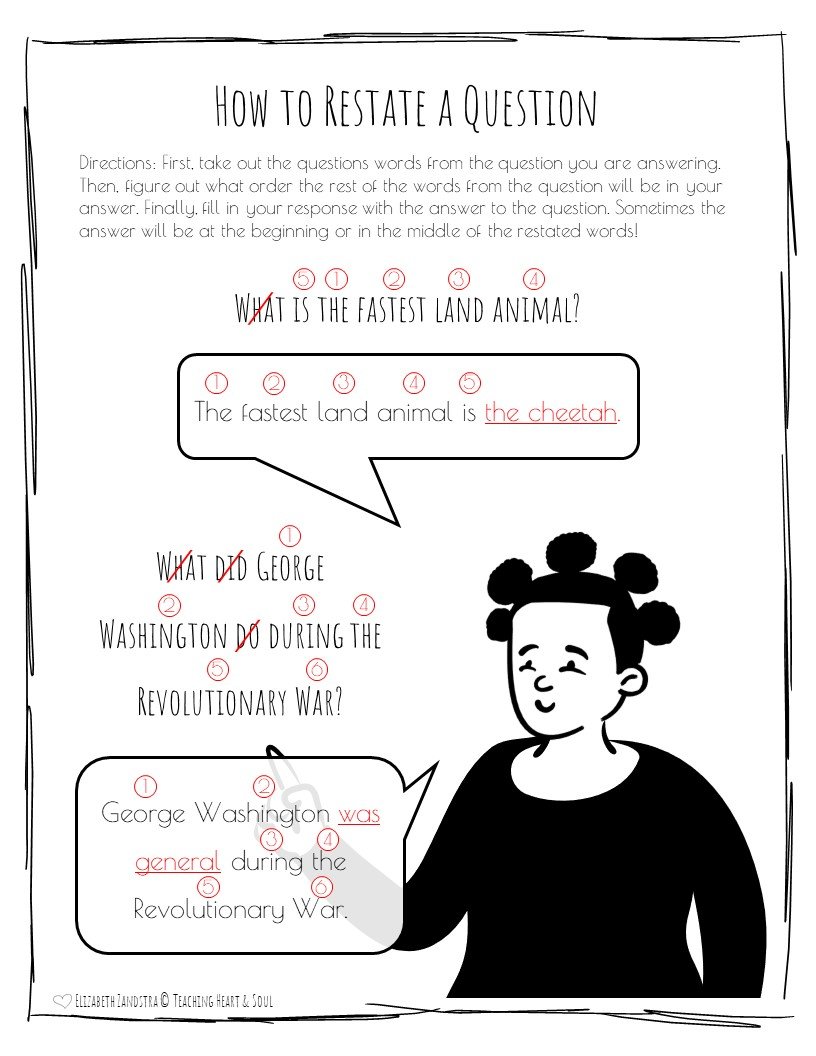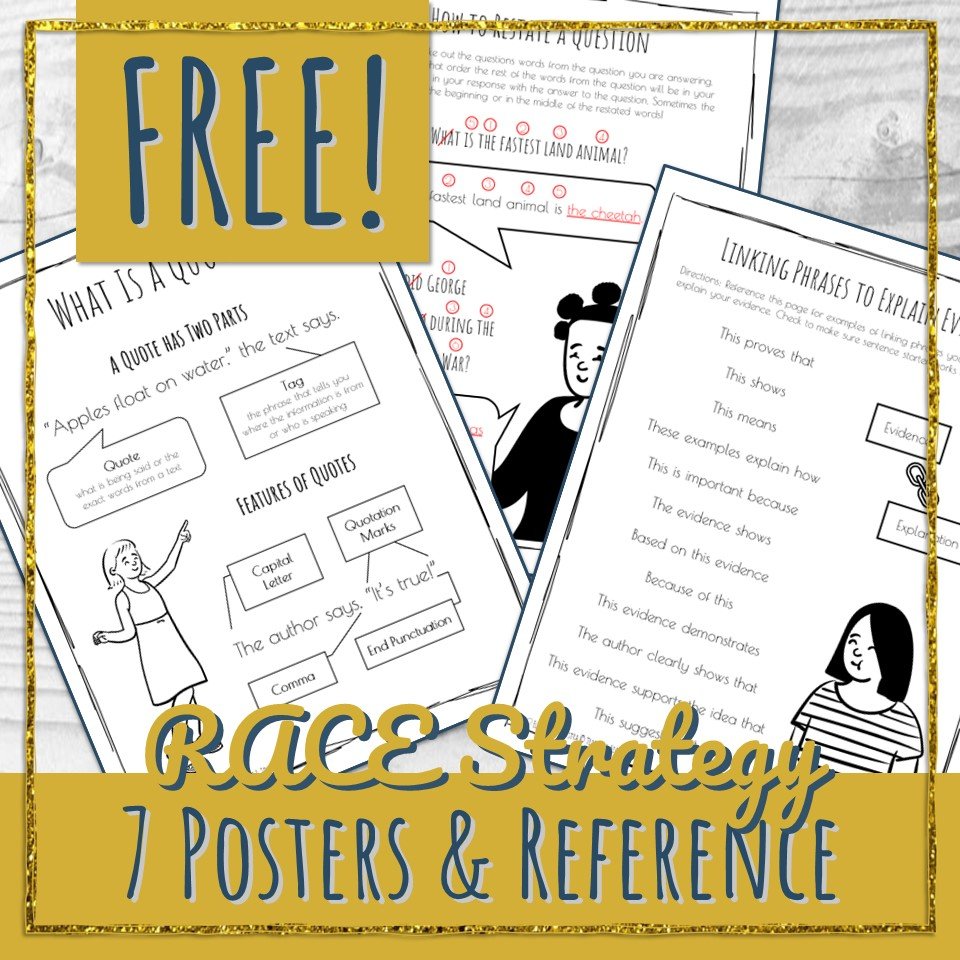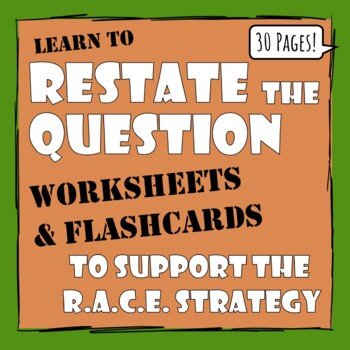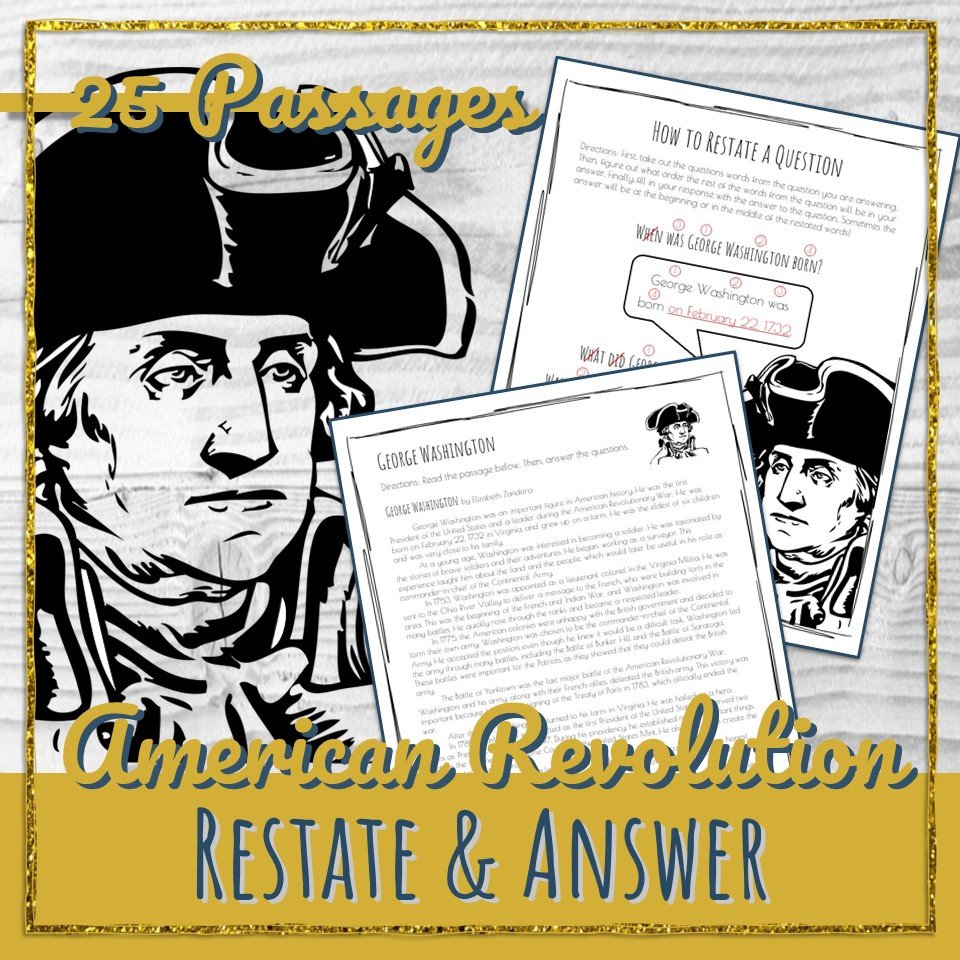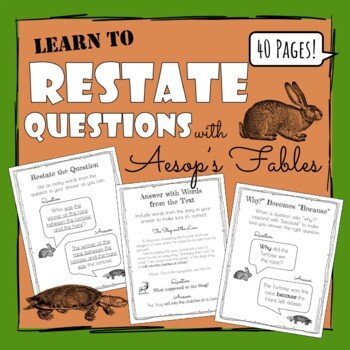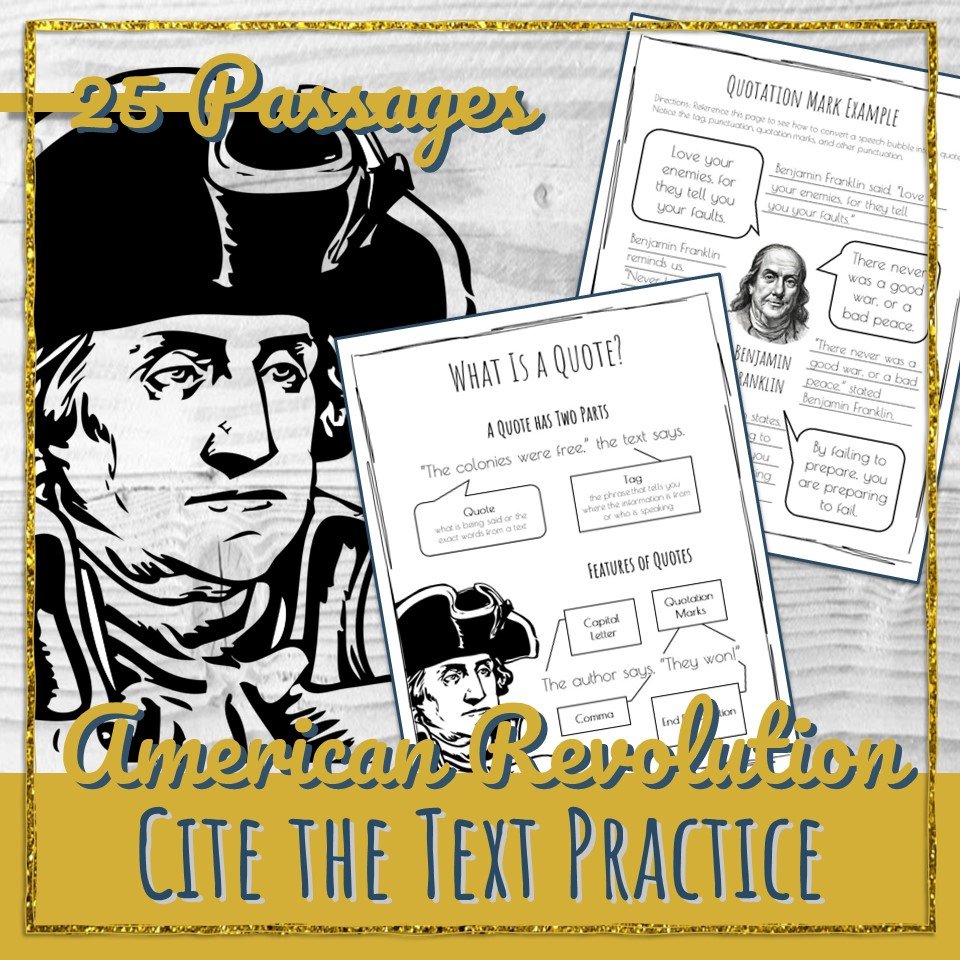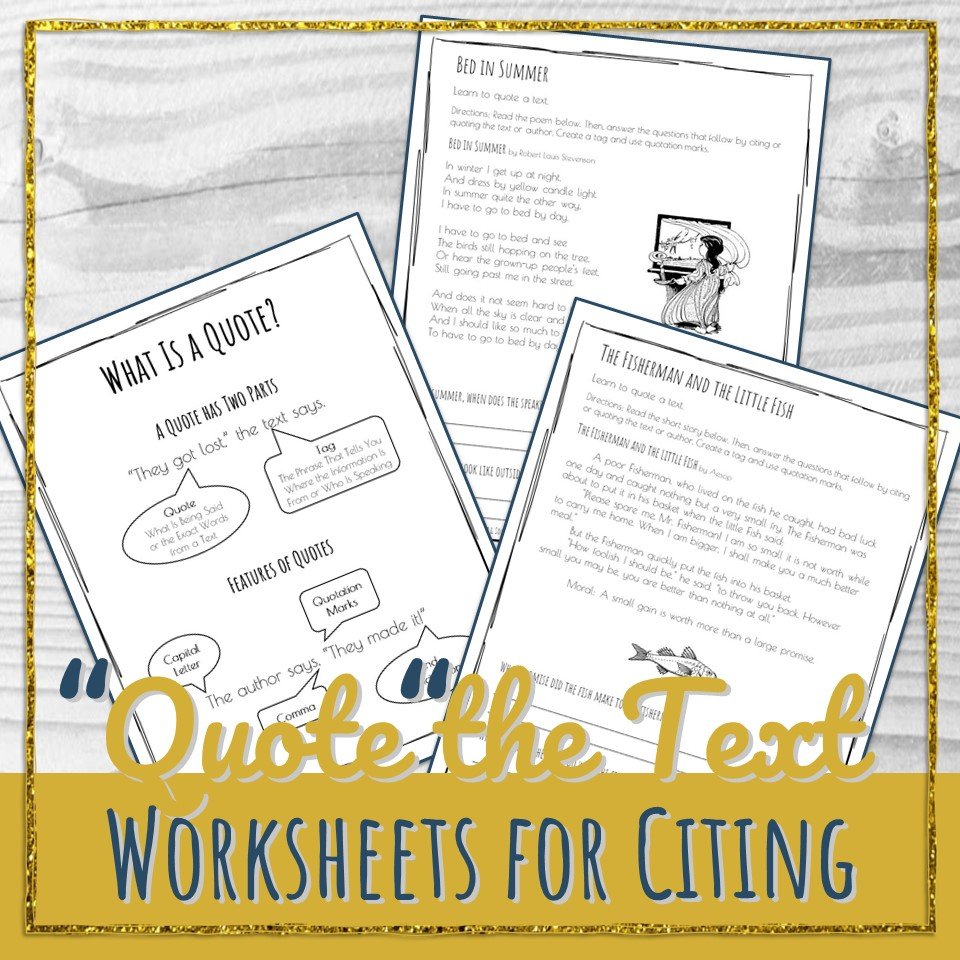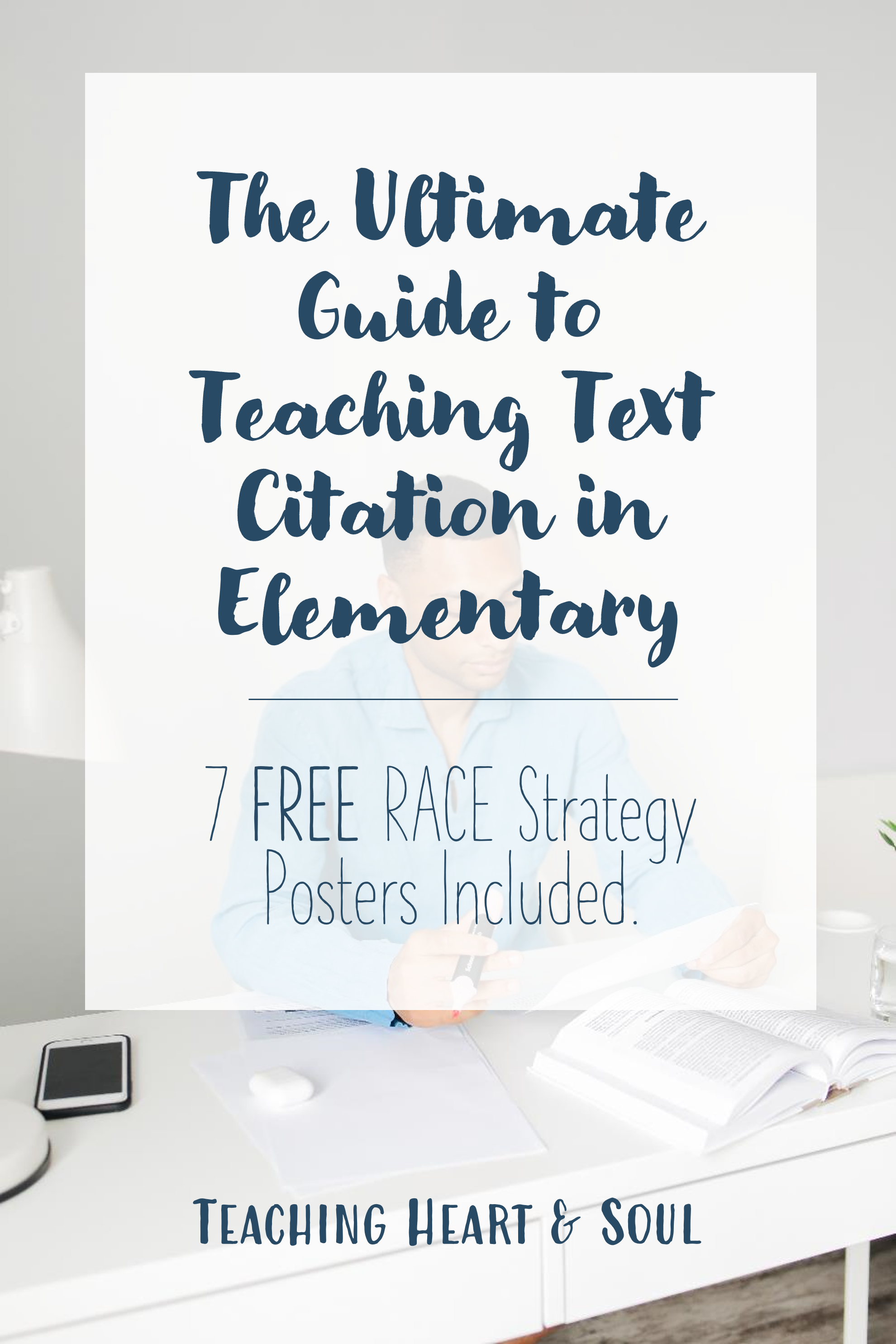Citing Text Evidence: Teaching Strategies
Citing Text Evidence
Citing text evidence is a critical skill for students to master, as it not only improves their writing and reading comprehension, but it also teaches them how to think critically and make arguments based on evidence. As educators, it is our responsibility to teach our students how to properly cite text evidence in order to prepare them for success in their academic careers and personal lives.
Prerequisite Skill: Restate & Answer the Question
Before students learn to cite text evidence, they need to know how to restate and answer a question. This is a beginning step that helps students prepare to learn the RACE strategy and - if done in a particular way - can teach them to look at the text for their answer.
The first two steps to the RACE strategy are to restate and answer the question. The next step is to cite evidence. So, before moving on to teaching students how to cite textual evidence, make sure students know how to do the first two steps.
Restate and Answer While Referencing the Text
To teach students to restate and answer questions in a way that prepares them to cite evidence, make sure each reading comprehension question is text-specific and hopefully not a detail they can remember on their own.
When students are first learning this skill, they do not need to quote the passage. Instead, all they need to do is find the answer in the text before answering the question. This helps students relate their answers to the text just like citing evidence does, but it keeps things simple to start.
Restate & Answer & Cite in the Context of the RACE Strategy
Restating and answering a question and citing evidence are both parts of the RACE strategy. Restating and answering is the easiest part of the RACE strategy that students should learn to do first. The next part of this strategy is citing textual evidence.
While citing text evidence can be taught as a separate skill, it is easier for students to understand the importance of this skill by putting it into the context of the RACE strategy. The RACE strategy teaches students how to relate citations to their answers and explain how the citation proves they are correct.
Prerequisite Skill: Quotation Marks
Another prerequisite skill students need to know before they can be expected to cite text evidence correctly, is how to use quotation marks and tags.
This skill can be taught alongside teaching students how to cite evidence, but it is better if students have some background knowledge about the formatting and grammar that goes along with a quote.
Before teaching students how to cite text evidence, make sure they know what tags are, how to use quotation marks, and how to correctly format a quote.
Do you want the posters you’re seeing? Download them for FREE!
Scaffold with Sentence Starters
Once upper elementary students know how to restate a question and use quotation marks, it is time to teach them how to cite textual evidence.
A great scaffold you can provide for your students is to give them sentence starters and stems, especially as they are just learning this skill.
While tags for dialogue include phrases such as "The character said..." or "The character replied...", tags for citations will look a little bit differently.
Sentence starters and stems for citations include phrases such as "According to the text..." or "The author states..." which can help students to easily integrate evidence into their writing.
It can be helpful to provide students with a list of common transition words and phrases to use. This will help students smoothly incorporate evidence into their writing and to make their arguments more cohesive and logical.
Some examples of sentence stems for citing text evidence are:
The text states,
The passage explains,
One example from the passage is
On page 5 it states,
Paragraph 2 says,
In the text it says,
The author said,
The article tells us,
In the book it says,
According to the text,
For instance
For example
It is also important to provide students with a deeper understanding of the text itself. This can be done by encouraging them to closely read the text and to actively engage with it. Asking questions that require students to cite textual evidence can help students to develop a better understanding of the text.
Scaffold with Color Coding
One way to help students visually identify text evidence within a passage is to use color coding. This can be done by highlighting or underlining important information in different colors. This is a great strategy to use to help students easily go back to the text to find important information that should be included in their answers as text evidence.
If you want information on more strategies, like using think-alouds and using annotations, check out We Are Teachers.
Using Constructed Response Questions
Constructed response questions are another great tool for teaching text evidence to upper elementary students. These questions require students to use evidence from the text to support their answers, which helps them to practice their citation skills.
A constructed response question often requires students to use the RACE strategy to answer a text-based question. However, citing textual evidence is only the third part of this four-part strategy.
Modifying the RACE Strategy
Download the FREE RACE strategy posters from this blog!
If students are just learning how to cite text evidence, it's probably a good idea to have your students only use the first 3 steps of the RACE strategy, while making it your goal to finish teaching the strategy after they are more familiar with citing evidence.
In this case, as students answer constructed response questions, have them restate and answer the question as well as cite the evidence. Make sure the evidence is related to their answer, but do not require an explanation for the citation until later.
It is important (even at this stage) to teach students how to identify text evidence that supports their arguments, rather than just providing a random selection of text.
Finding Relevant Evidence
Teaching students how to find relevant and sufficient textual evidence can be done through guided practice with a reading passage, where students are asked to find and cite specific examples of supporting details.
By providing students with these opportunities for concentrated practice, they will understand the reasoning behind citing textual evidence and be better prepared to use it in their own writing.
Task Card Practice
Task cards are also a great way to provide students with concentrated practice in how to cite text evidence. These cards can be used in small groups or individually, and can include a reading passage with several questions that students must answer by citing evidence from the text. This allows students to practice identifying and citing key elements of the text in a focused and manageable way.
Text Evidence Printables
There are so many other text evidence printables and worksheets that are available for more practice. Check out my TPT store to find a few different print-and-go resources you can use to help your students learn how to cite evidence.
Review Throughout the Year
Incorporating text evidence citation into your curriculum is vital for the ongoing development of your students' skills. By making it a regular part of your classroom routine, you are not only helping your students to improve their abilities but also making the process more intuitive for them.
It's essential to make citing text evidence an ongoing process, not a one-time event to ensure that your students are well-equipped for academic and professional success. This can be achieved by integrating text evidence citation into all aspects of your curriculum, from reading comprehension to constructed response questions.
Incorporate into All Subjects
One effective strategy for teaching text evidence in the upper elementary grades is to incorporate it into all aspects of the curriculum.
This may mean that you give students constructed response questions in history and science, and not just during English language arts. If there are passages you are reading in other subjects, have students answer questions while referencing those passages to help them practice citing textual evidence.
This can include providing students with sentence starters that help them to express their ideas in their own words, while also citing relevant text evidence from the science or history passage.
By providing your students with regular opportunities to practice and receive feedback on their text evidence citation skills, you will help them to develop a firm understanding of the importance of citing text evidence and the ability to do it effectively.
Regular Assessments
It is also important to regularly assess students' understanding of text evidence through comprehension questions. This can be done through quizzes, class discussions, or written assessments.
This will help determine whether students are correctly identifying and citing text evidence, and help teachers make adjustments to their teaching methods as necessary.
Distance Learning
Distance learning has made it a bit challenging for educators to teach text evidence, however, there are still ways to make it work. For example, educators can use online tools such as Google Docs to collaborate with students and provide feedback on their citations in real-time.
Also, educators can use digital resources such as videos and interactive activities to engage students and make the learning process more interactive.
Next Step: Explain the Reasoning
Citing text evidence is just one part of the RACE strategy. Once students understand how to do this, the next step is to teach students how to explain how their evidence proves their answer is correct.
One way to do this is by providing students with sentence stems or prompts that guide them in explaining the significance of the textual evidence they have found.
Sentence stems to explain how a citation proves an answer include:
"The evidence I found supports my claim because..."
"This piece of textual evidence is important because it shows..."
This step in the RACE strategy helps students to not only find and cite textual evidence, but also to understand and explain the relevance of the evidence to their argument.
Download the FREE posters for the RACE strategy!
Conclusion
In conclusion, teaching students how to effectively find and cite text evidence is a crucial component of developing their critical thinking and analytical skills. By providing students with a variety of strategies and tools, such as sentence stems, color coding, and text evidence printables, they can improve their abilities to locate and cite relevant evidence from a text.
Additionally, by incorporating text evidence citation into all aspects of the curriculum and making it a regular part of the classroom routine, students will develop a firm understanding of the importance of citing text evidence.
Furthermore, by providing ongoing feedback and opportunities for concentrated practice, educators can help students to deepen their understanding of text evidence and how to use it effectively in their own writing and arguments.
Overall, the goal is to make the process of finding and citing text evidence an ongoing, natural and intuitive one for students, so that it becomes a fundamental part of their analytical process.
Do you want more help teaching the RACE strategy? Check out my resources below:

